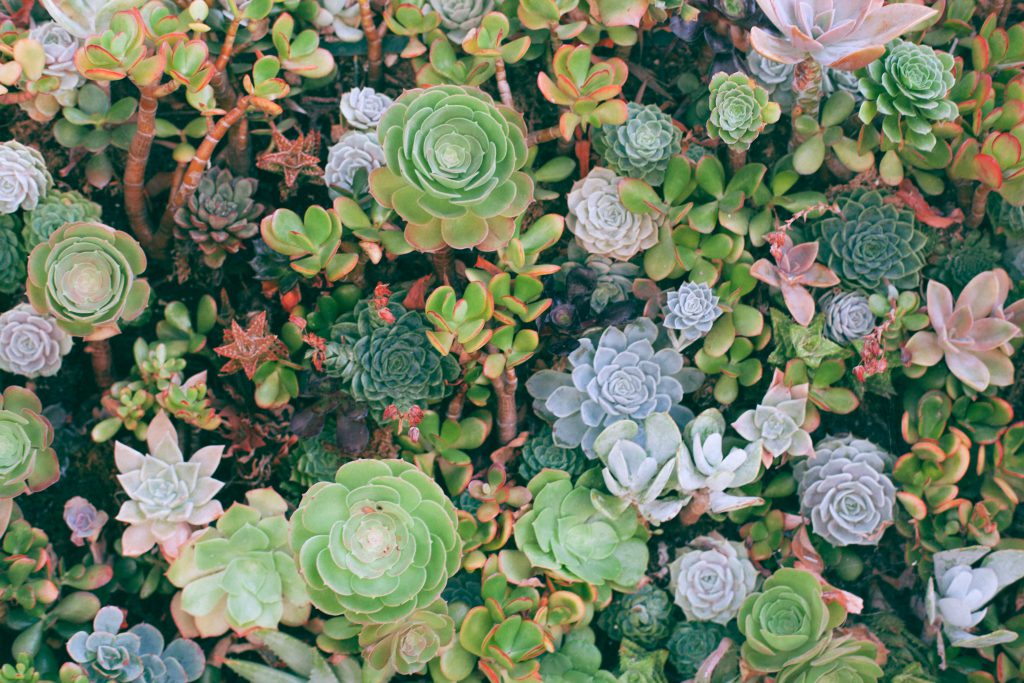
5 Tips for Growing Thriving Succulents
Have you heard succulents are easy to care for, yet your succulents keep dying? Don’t worry—it’s not just you! We’re here to separate what you might have been told before with some expert succulent advice. All you need are a few basics and you’ll be on your way to growing happy, healthy succulents too!

Step 1: Succulent selection
Choosing the right succulents for your space is just as important as giving them enough sunlight and water. Succulents as a whole have very similar needs, but some varieties need slightly different amounts of water or sunlight than others. But when you’re staring at all the pretty varieties at the greenhouse, it’s easy to ignore advice and just choose what looks nice. My advice? Do a little investigating before you buy.
My top 5 varieties when starting out with indoor succulents are:
- Zebra Plants
- Mexican Rose Succulents
- Hens and Chicks
- Ghost Plants
- Aeonium Kiwi

Step 2: Proper Potting Soil
A common mistake when growing succulents is starting with the wrong type of soil. When shopping for soil, look for one that specifically mentions cacti or succulents. The goal is a soil that will hold enough water for your succulents to get what they need, but that will still dry out enough so their roots are not sitting in water–leading to the dreaded root rot. This will cause your succulent to die.

Step 3: Pick the right pots
It can be tempting to pick a pot based on looks alone–but trust me, your selection is more important than you think! Choosing a pot with proper drainage and sizing will help ensure the health of your succulents-so choose wisely. First and foremost, selecting a pot with a drainage hole will allow water to drain quickly, so that your succulents don’t get waterlogged.
Secondly, size matters! Planting succulents in pots that are too large for them is actually detrimental to their growth. Your succulent should only have an inch or two of extra room around its sides in the pot. This will encourage it to grow.
Lastly, I recommend terracotta or ceramic pots if you’re just starting out. Reason being that these materials are breathable, which is especially important for indoor succulents. The pot material will allow water and air to escape– helping you to prevent overwatering and root rot.

Step 4: Location location location
Succulents generally do best with a combination of direct and indirect sunlight, although some types can thrive indoors without ever seeing the sun.
I recommend placing your succulents in a sunny, preferably south-facing window. You might notice that some of your plants need more or less sunlight than others. This is where paying attention to your plant will help you in the long run! Succulents that aren’t getting enough sun will look “leggy” with long stems and sparse leaves. Plants that are getting too much sun will get brown, scorched leaves. Keep a close eye on how your plants are doing and adjust accordingly.

Step 5: Resist overwatering
“How often do you water succulents?” is a question I often hear. But the answer is not one size fits all. The same method I use for watering my house plants, goes for succulents too. I never follow a watering schedule. It’s all about periodically examining each individual plant and their soil and determining their needs from there. So a good rule of thumb is to simply check the soil and only water once it is completely dry.
You should check on your succulent once a week, but it is not guaranteed that it will need water every time you check. I usually end up watering my indoor succulents once every 1-2 weeks. Start there and adjust accordingly. Just remember, in the case of watering–less is almost always more.
Follow these tips and you’ll be a succulent guru in no time! Happy growing!